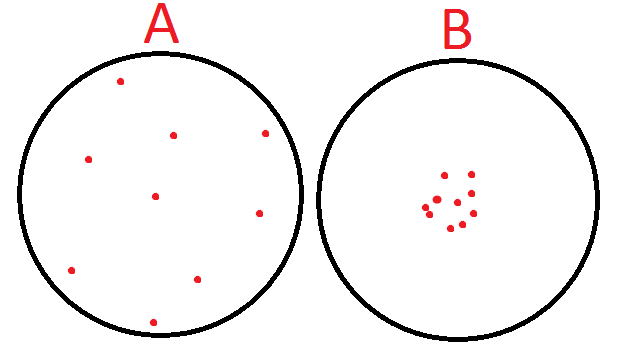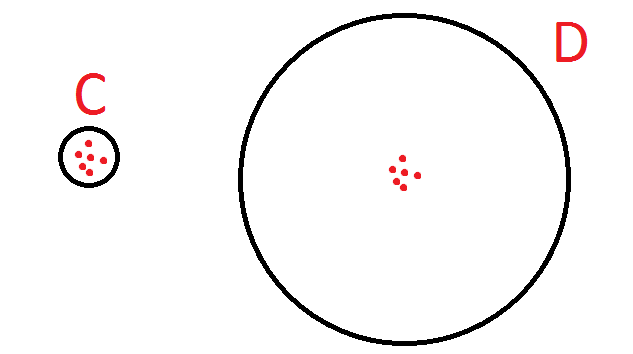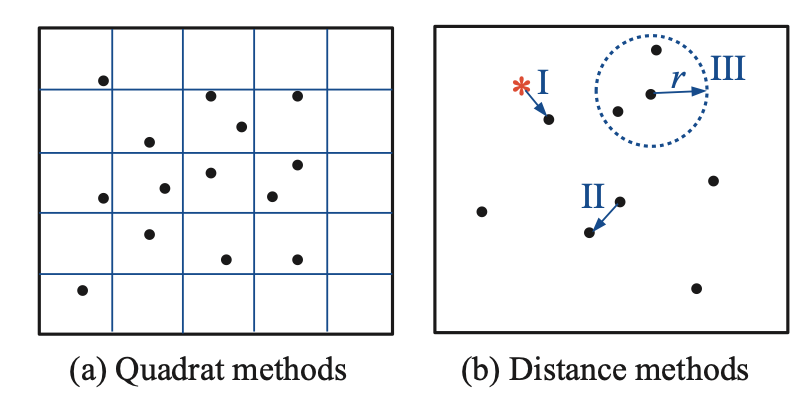I have circles containing points (x,y). I would like to measure the scattering of the points within the circle.
For example, in the following picture, circle A will have a higher value since the points are much more scattered across the circle.

Notice that the circles have varying value - so we can have a circles with different radiuses.
For example in the following picture, although the points are the same - circle C will have a higher value because the points are scattered across the whole circle.

Do you know a measurement which I can use for such purpose?
Thanks!

